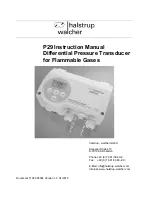
Page 39
HX210
12. Use of 156.375 MHz is available for navigational communications only
in the Mississippi River from South Pass Lighted Whistle Buoy “2” and
Southwest Pass entrance Mid channel Lighted Whistle Buoy to mile
242.4 above head of Passes near Baton Rouge, and in addition over the
full length of the Mississippi River-Gulf Outlet Canal from entrance to its
junction with the Inner Harbor Navigation Canal, and over the full length
of the Inner Harbor Navigation Canal from its junction with the Mississippi
River to its entry to Lake Pontchartrain at the New Seabrook vehicular
bridge.
13. Within 120 km (75 miles) of the United States/Canada border, in the area
of the Puget Sound and the Strait of Juan de Fuca and its approaches,
157.425 MHz is half of the duplex pair designated as Channel 88. In this
area, Channel 88 is available to ship stations for communications with
public coast stations only. More than 120 km (75 miles) from the United
States/Canada border in the area of the Puget Sound and the Strait of
Juan de Fuca, its approaches, the Great Lakes, and the St. Lawrence
Seaway, 157.425 MHz is available for intership and commercial commu-
nications. Outside Puget Sound area and its approaches and the Great
Lakes, 157.425 MHz is also available for communications between com-
mercial fishing vessels and associated aircraft while engaged in commer
-
cial fishing activities.
14. When the frequency 156.850 MHz is authorized, it may be used addition-
ally for search and rescue training exercises conducted by state or local
governments.
15. The frequency 156.850 MHz is additionally available to coast stations on
the Great Lakes for transmission of scheduled Coded Marine Weather
Forecasts (MAFOR), Great Lakes Weather Broadcast (LAWEB) and
scheduled Notices to Mariners or Bulletins. F3C and J3C emissions are
permitted. Coast Stations on the Great Lakes must cease weather broad-
casts which cause interference to stations operating on 156.800 MHz
until the interference problem is resolved.
16. The frequency 157.100 MHz is authorized for search and rescue train-
ing exercises by state or local government in conjunction with U.S. Coast
Guard stations. Prior U.S. Coast Guard approval is required. Use must
cease immediately on U.S. Coast Guard request.
17. The duplex pair for channel 20 (157.000/161.600 MHz) may be used for
ship to coast station communications.
18. Available for assignment to coast stations, the use of which is in accord
with an agreed program, for the broadcast of information to ship stations
concerning the environment.












































